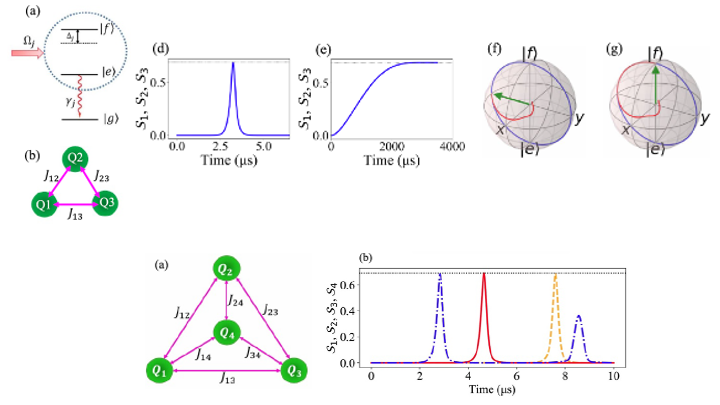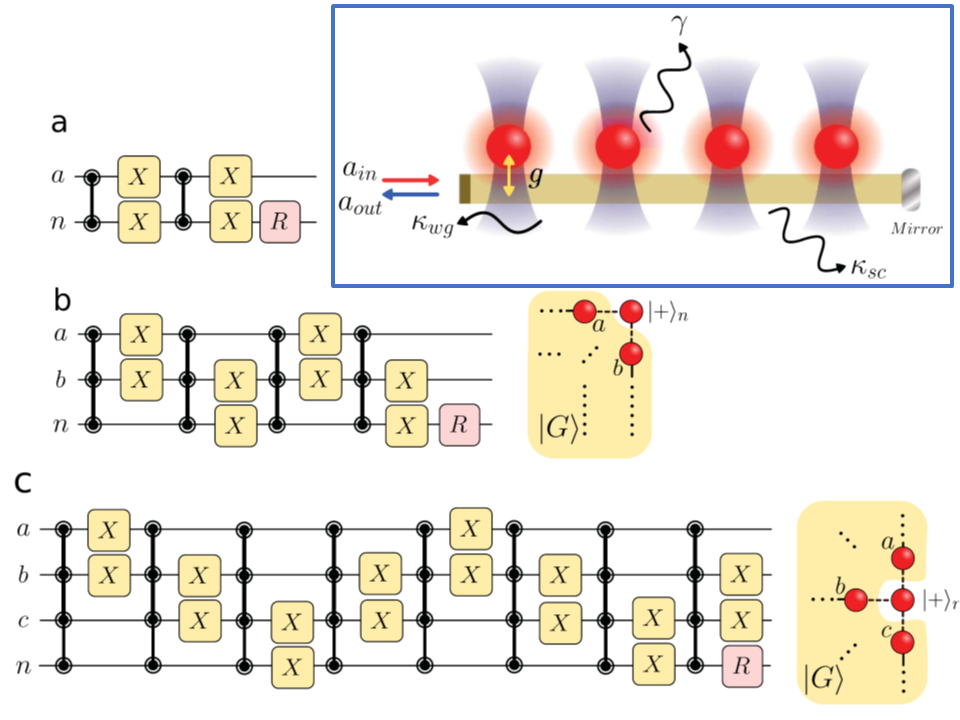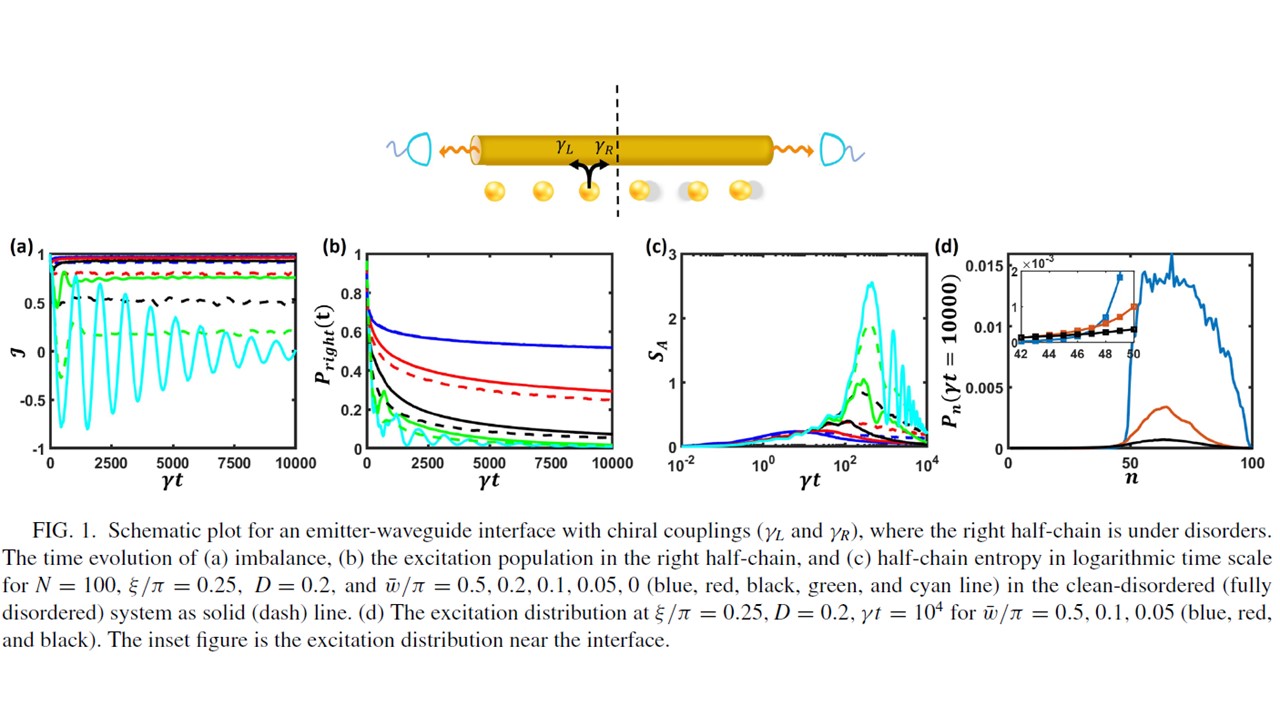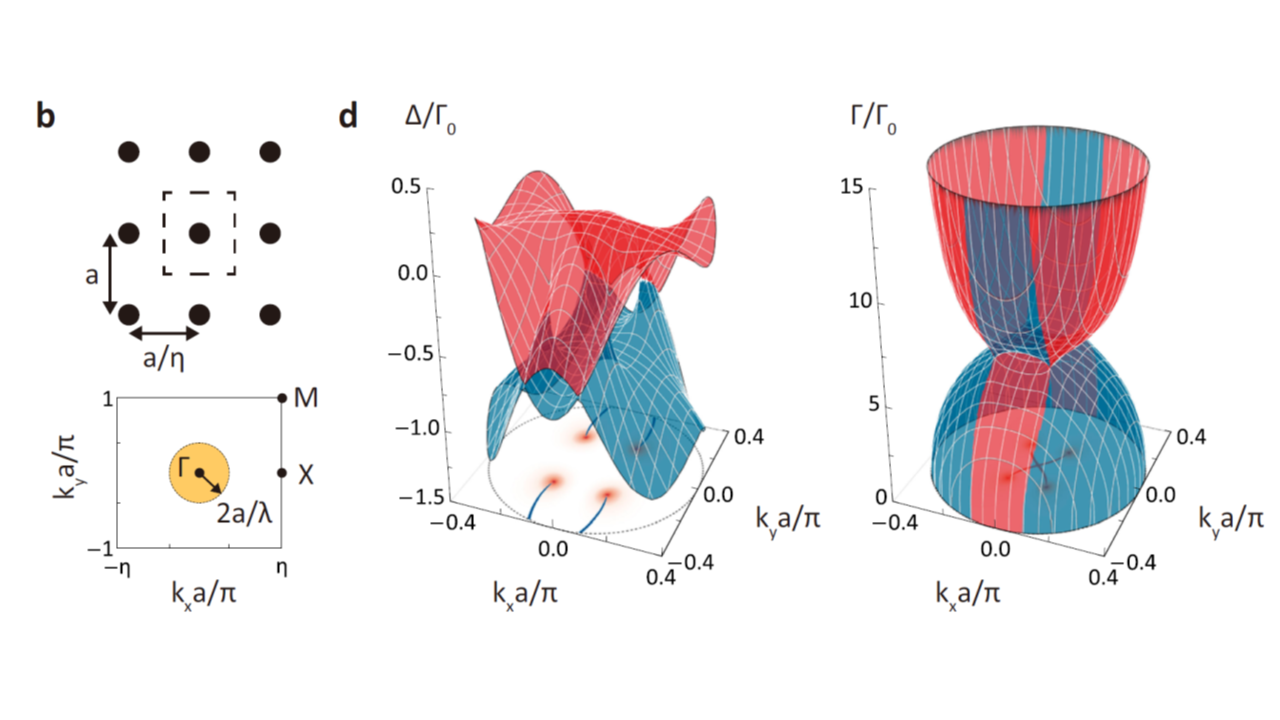Chimdessa Gashu Feyisa, J-S You, Huan-Yu Ku and H H Jen
Quantum Sci. Technol. 10 025021 (2025).

Open quantum systems are susceptible to losses in information, energy, and particles due to their surrounding environment. One novel strategy to mitigate these losses is to transform them into advantages for quantum technologies through tailored non-Hermitian quantum systems. In this work, we theoretically propose a fast generation of multipartite entanglement in non-Hermitian qubits. Our findings reveal that weakly coupled non-Hermitian qubits can accelerate multiparty entanglement generation by thousands of times compared to Hermitian qubits, in particular when approaching the 2^n-th order exceptional points of n qubits in the PT-symmetric regime. Furthermore, we show that Hermitian qubits can generate GHZ states with a high fidelity more than 0.9995 in a timescale comparable to that of non-Hermitian qubits, but at the expense of intense driving and large coupling constant. Our approach is scalable to a large number of qubits, presenting a promising pathway for advancing quantum technologies through the non-Hermiticity and higher-order exceptional points in many-body quantum systems.
C.-H. Chien, S. Goswami, C.-C. Wu, W.-S. Hiew, Y.-C. Chen, and H. H. Jen
Quantum Sci. Tech. 9, 025020 (2024).

Scalable graph states are essential for measurement-based quantum computation and many entanglement-assisted applications in quantum technologies. Generation of these multipartite entangled states requires a controllable and efficient quantum device with delicate design of generation protocol. Here we propose to prepare high-fidelity and scalable graph states in one and two dimensions, which can be tailored in an atom-nanophotonic cavity via state carving technique. We propose a systematic protocol to carve out unwanted state components, which facilitates scalable graph states generations via adiabatic transport of a definite number of atoms in optical tweezers. An analysis of state fidelity is also presented, and the state preparation probability can be optimized via multiqubit state carvings and sequential single-photon probes. Our results showcase the capability of an atom-nanophotonic interface for creating graph states and pave the way toward novel problem-specific applications using scalable high-dimensional graph states with stationary qubits.
C.-C. Wu, K.-T Lin, I G. N. Y. Handayana, C.-H. Chien, S. Goswami, G.-D. Lin, Y.-C. Chen, and H.
H. Jen
Phys. Rev. Research 6, 013159 (2024).

In one-dimensional quantum emitter systems, the dynamics of atomic excitations are influenced by the collective coupling between emitters through photon-mediated dipole-dipole interactions. By introducing positional disorders in a portion of the atomic array, we investigate the delocalization phenomena at the interface between the disordered and clean zones. The excitation is initialized as symmetric Dicke states in the disordered zone, and several measures are used to quantify the excitation localization. We first use population imbalance and half-chain entropy to investigate the excitation dynamics under time evolutions, and further investigate the crossover of excitation localization to delocalization via the gap ratio from the eigenspectrum in the reciprocal coupling case. In particular, we study the participation ratio of the whole chain and the photon loss ratio between both ends of the atomic chain, which can be used to quantify the delocalization crossover in the nonreciprocal coupling cases. Furthermore, by increasing the overall size or the ratio of the disordered zone under a fixed number of the whole chain, we observe that excitation localization occurs at a smaller disorder strength in the former case, while in the latter, facilitation of the delocalization appears when a significant ratio of the clean zone to disordered zone is applied. Our results can reveal the competition between the clean zone and the disordered zone sizes on localization phenomenon, give insights to nonequilibrium dynamics in the emitter-waveguide interface, and provide potential applications in quantum information processing.
T H Chang, T N Wang, H H Jen, and Y-C Chen
New J. Phys.
High-fidelity controlled-Z (CZ) gates are essential and mandatory to build a large-scale quantum computer. In neutral atoms, the strong dipole–dipole interactions between their Rydberg states make them one of the pioneering platforms to implement CZ gates. Here we numerically investigate the optimized pulses to generate a high-fidelity Rydberg CZ gate in a three-level ladder-type atomic system. By tuning the temporal shapes of Gaussian or segmented pulses, the populations on the intermediate excited states are shown to be suppressed within the symmetric gate operation protocol, which leads to a CZ gate with a high Bell fidelity up to 99.92%. These optimized pulses are robust to thermal fluctuations and the excitation field variations. Our results promise a high-fidelity and fast gate operation under amenable and controllable experimental parameters, which goes beyond the adiabatic operation regime under a finite blockade strength.
Chun-Che Wang, Yi-Cheng Wang, Chung-Hsien Wang, Chi-Chih Chen and H H Jen
New Journal of Physics
Cooling the trapped atoms toward their motional ground states is key to applications of quantum
simulation and quantum computation. By utilizing nonreciprocal couplings between two atoms,
we present an intriguing dark-state cooling scheme in Λ-type three-level structure, which is shown
superior than the conventional electromagnetically-induced-transparency cooling in a single atom.
The effective nonreciprocal couplings can be facilitated either by an atom–waveguide interface or a
free-space photonic quantum link. By tailoring system parameters allowed in dark-state cooling,
we identify the parameter regions of better cooling performance with an enhanced cooling rate.
We further demonstrate a mapping to the dark-state sideband cooling under asymmetric laser
driving fields, which shows a distinct heat transfer and promises an outperforming dark-state
sideband cooling assisted by collective spin–exchange interactions.
Yi-Cheng Wang, Jhih-Shih You & H. H. Jen
Nature Communications 13, 4598 (2022).

Explorations of symmetry and topology have led to important breakthroughs in quantum optics, but much richer behaviors arise from the non-Hermitian nature of light-matter interactions. A high-reflectivity, non-Hermitian optical mirror can be realized by a two-dimensional subwavelength array of neutral atoms near the cooperative resonance associated with the collective dipole modes. Here we show that exceptional points develop from a nondefective degeneracy by lowering the crystal symmetry of a square atomic lattice, and dispersive bulk Fermi arcs that originate from exceptional points are truncated by the light cone. From its nontrivial energy spectra topology, we demonstrate that the geometry-dependent non-Hermitian skin effect emerges in a ribbon geometry. Furthermore, skin modes localized at a boundary show a scale-free behavior that stems from the long-range interaction and whose mechanism goes beyond the framework of non-Bloch band theory. Our work opens the door to the study of the interplay among non-Hermiticity, topology, and long-range interaction.
